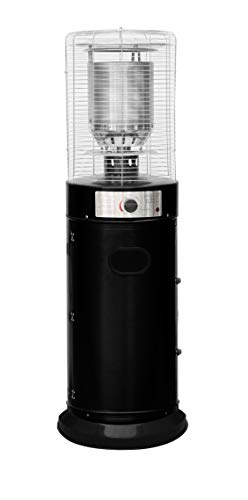The Essential Guide to Garden Heaters in the UK
As the evenings attract and the seasonal chill begins to seep into the air, garden spaces often receive less attention. However, with Alfresco Heating of garden heaters, home and outdoor enthusiasts can extend their enjoyment of these spaces well into the cooler months. In the UK, garden heaters have actually evolved into an essential feature that adds heat, environment, and performance to gardens. This short article checks out the various kinds of garden heaters readily available, their advantages and drawbacks, and valuable tips for picking the very best alternative for your outdoor area.
Tabulation
- Kinds Of Garden Heaters
- Gas Heaters
- Electric Heaters
- Wood-Burning Heaters
- Patio Umbrella Heaters
- Fire Pits
- Advantages and Disadvantages of Garden Heaters
- Selection Guide for Garden Heaters
- Frequently asked questions
- Conclusion
1. Types of Garden Heaters
When choosing a garden heater, it is necessary to think about how successfully it warms the space while likewise complementing the overall visual of the garden. Below are the most typical types of garden heaters available in the UK market.
Gas Heaters
Gas heaters are powered by propane or butane, providing a powerful source of heat that can warm a big location rapidly. They are typically seen at outdoor dining establishments and coffee shops due to the fact that of their efficiency.
Pros:
- High heat output
- Portability
- Appropriate for big spaces
Cons:
- Requires regular refilling of gas
- Some designs can be pricey
Electric Heaters
Electric heaters are getting popularity in residential gardens due to their benefit and ease of use. Available in different designs, they can be mounted to a wall, set up in a ceiling space, or placed as freestanding systems.
Pros:
- Easy to operate
- No requirement for gas refills
- Readily available in diverse designs
Cons:
- Dependent on electrical power supply
- May have higher running costs compared to gas
Wood-Burning Heaters
Wood-burning heaters and stoves offer a rustic appeal, ideal for producing a relaxing environment in the garden. They can work as barbecues and heating sources, making them multi-functional.
Pros:
- Provides a standard visual
- Can likewise be utilized for cooking
- Eco-friendly if using sustainable wood
Cons:
- Requires more upkeep
- May produce smoke and ash
Patio Umbrella Heaters
Patio umbrella heaters are a terrific choice for those with outdoor dining sets. These heaters are generally designed to fit underneath a patio umbrella, supplying heat to restaurants without blocking the view.
Pros:
- Compact and space-saving
- Easy to save when not in use
Cons:
- Limited heating radius
- Less powerful compared to other designs
Fire Pits
Fire pits have actually become staples in many UK gardens, functioning as both a heat source and a style function. Available in various shapes and materials, they develop a social center for events.
Pros:
- Provides both warmth and ambience
- Suitable for social gatherings
Cons:
- Requires supervision
- Not appropriate for small spaces
2. Benefits and Disadvantages of Garden Heaters
Selecting the right garden heater involves weighing the advantages and downsides connected with each type.
| Type | Advantages | Drawbacks |
|---|---|---|
| Gas Heaters | Quick heat, portable | Regular gas refills, expense |
| Electric Heaters | Hassle-free, varied styles | Dependent on electrical power, running costs |
| Wood-Burning Heaters | Rustic appeal, multi-functional | Maintenance needed, can produce smoke |
| Patio Umbrella Heaters | Compact, easy to store | Restricted heating radius |
| Fire Pits | Heat with ambience, social gathering | Needs supervision, space consumption |
3. Choice Guide for Garden Heaters
Selecting the right garden heater includes considering several elements. Here are suggestions to keep in mind:
- Space: Measure your outdoor location to identify the size and output of the heater needed.
- Budget plan: Set your spending plan early, considering both the initial financial investment and ongoing running expenses.
- Style: Choose a heater that complements your garden's design and atmosphere.
- Mobility: Consider whether you need a fixed unit or one that can be easily moved and kept.
- Environment: Assess if you want an environmentally friendly choice like a wood-burning heater or if electrical or gas will match your requirements more efficiently.
4. FAQs
Q: How much heat does a garden heater produce?A: Heat output varies by model, generally varying from 5 to 15 kW. Bigger areas may need heaters with higher outputs.
Q: Are electrical heaters safe to use outdoors?A: Yes, however ensure they are particularly created for outdoor usage to withstand the components and avoid mishaps.
Q: Can garden heaters be utilized throughout the rain?A: While some heaters are waterproof or water-resistant, using any electrical heater in a downpour is not recommended. Gas heaters may be more resistant.
Q: Do I require a license for a wood-burning heater?A: In some locations, wood-burning ranges may require a license or needs to stick to specific policies. Always examine Outdoor Heating Products .
Q: What upkeep do garden heaters require?A: Maintenance varies by type; normally, examining the gas supply, cleaning fire pits, and ensuring electric systems are in excellent working order is recommended.
As the UK garden season progresses beyond summertime, the addition of a garden heater can change an outdoor space into a year-round sanctuary. By comprehending the range of heaters readily available, their advantages and disadvantages, and customising them to fit one's needs, homeowners can delight in epic gatherings under the stars, indulging in warmth and environment. The option of garden heater not only affects comfort however likewise raises the design of the garden, permitting people to take pleasure in the excellent outdoors longer into the chillier months.

